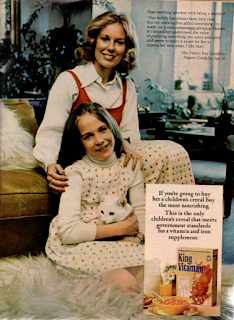At some point during the mid-20th century, the household bathroom began to change from a mostly utilitarian space to a room worthy of extensive decorator touches. Gone were the days of a room with stark white toilets and sinks, with plain towel rods and cold linoleum on the floor, and in its place emerged a space in which no detail was too small to become part of the decor. Color and pattern began filling nearly every inch, from bath tissue boxes to wastebaskets to coordinated toilet tissue rolls to borders on towels and washcloths. A product such as Rubbermaid's Floral Decorators would fit nicely into this scheme.
Floral Decorators were rubber panels which were available in a raised antique cane or floral design, and in a variety of decorator colors. The panels came with self-adhesive strips which could be attached to any hard surface. The ovals were primarily intended for the top of toilet seat lids, and the rectangles for the doors of medicine chests and vanities and the top of the tank lid, although the panels could be used on the wall or other spaces or rooms as the decorator wished.
At a time when many elements of bathroom decor featured fabrics and materials that were notoriously difficult to keep clean, Floral Decorators actually made a lot of sense. They were a way to add a pop of color to the toilet without resorting to the fuzzy carpeted seat and tank covers that were attractive but somewhat unsanitary; the panels could simply be wiped clean with a damp cloth. And, if the decorator wished to change the color scheme, the panels could be simply peeled off.
Some decorating trends of the 1970s seem a bit over-the-top in retrospect, but this one seems to be less so than many. After all, even a practical room such as the bathroom deserves a little color and decorator love.






